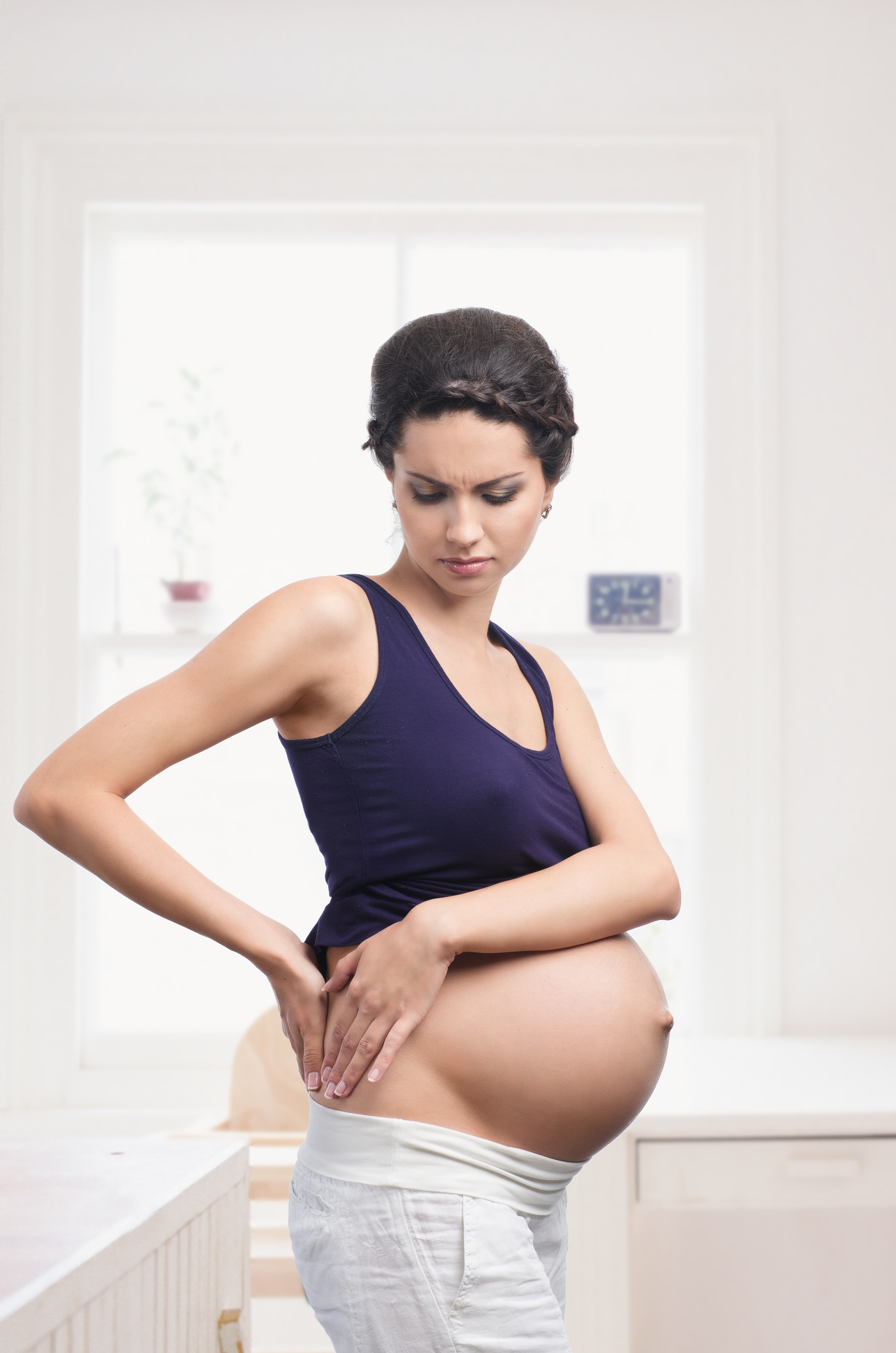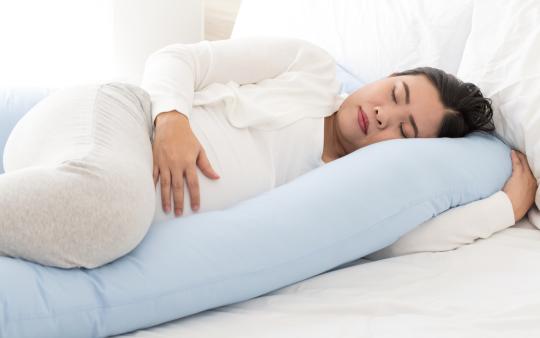During pregnancy, your spine and soft tissues undergo the most rapid transformation that they will go through in your entire life, to accommodate a growing fetus and prepare for the delivery of a new baby. As the baby grows and you gain weight, your centre of gravity changes, your abdominal muscles get stretched out and are unable to stabilize your posture as before, and you start placing more stress on your low back joints and muscles. Your joints loosen thanks to the hormone relaxin, which is necessary for enabling the pelvis to accommodate an enlarging uterus, adding even more stress to your already overworked back muscles. All of these changes increase the likelihood of back pain during pregnancy.
For many women, this is their first episode of low back pain, and they usually find it starts somewhere in the 18th–28th week of pregnancy. A study in the Journal of Orthopaedics states that 50–90 percent of pregnant women will experience lower back pain that will persist after birth. Ouch! Consider the fact that parents may be lifting a 7- to 10-pound baby as many as 50 times a day! By 12 months, your baby weighs approximately 17 pounds, and at 2 years of age, that child has become a 25- to 30-pound toddler. The repetitive lifting of your child may aggravate low back pain and even put you at risk for neck, mid back, low back, and wrist problems.
While you may not be able to prevent pain, the good news is that there are steps you can take to protect your back during and after pregnancy.
Pre-baby pregnancy exercises
The best way to avoid pain during and after pregnancy is to work on your muscle strength and posture to minimize stress on the body. Focusing on exercises that target core muscles means proper support for your arching back.
Note: Always consult a healthcare practitioner before starting any new exercise regimen.
Soft support
Pillow supports have shown to have a positive effect on back pain during pregnancy. U-shaped or lumbar roll pillows can decrease pain and insomnia in late pregnancy by supporting the abdomen in side-lying positions. It is also recommended to sleep on your left side to reduce the pressure of your uterus on the large blood vessels in your abdomen.
Best foot forward
Wearing comfortable, flat, and supportive shoes is more important than ever. If you have flat feet, it’s recommended to invest in a good pair of orthotics.
Elevate yourself
Take frequent, short breaks and put your feet up. Adequate rest restores your energy and gives your muscles a chance to relax. You can also try lying flat on the floor and propping your legs at a 90-degree angle against a wall for a few minutes every day to send blood flow to your core.

Core exercises for back pain
Try these core-builders to help support your hardworking back!
Pelvic tilt
Lie on your back on a firm surface with knees comfortably bent. Flatten your back against the surface while contracting abdominal muscles, as if pulling your belly button toward your ribs.
Bird dog
Beginning on your hands and knees, extend one leg and the opposite arm away from your body, holding them parallel to the floor. Engage your core muscles while making sure to keep your pelvis flat. Try not to shift your weight.
At home exercises after pregnancy
As you begin to nurse and carry your new baby you may find that your back pain returns and you may even get headaches. Proper posture during lifting, carrying, holding, and feeding your baby is crucial at this time.
Lift using both arms. Bring baby as close to your chest as possible. Stand with your feet at least a shoulder width apart, keep your back in a neutral position, and bend your knees as you lift.
Carry your little one securely and turn with your hips by pivoting your feet instead of twisting with your back to avoid excess strain.
Hold your child in an upright position directly against your chest. While slinging a child over one hip feels natural, the position creates postural imbalances that can lead to low back pain over time.
Feed your baby while sitting in a chair with good back support and avoid leaning forward to reach your newborn’s mouth. Use pillows to support and place your baby closer to you.
There is no time for pain in parenthood, and with simple lifestyle changes you can avoid new mom back pain both during and after pregnancy. Self-care is a commitment we as parents must make so that we can be the best version of ourselves for our children. If your back pain prevents you from doing your daily activities, a chiropractor or healthcare provider can help!
You may also enjoy: 9 Natural Ways to Relieve Back Pain, Kegel Exercises for Post-Baby Incontinence, and Birthing Ball Basics for Pregnancy and Labour.






